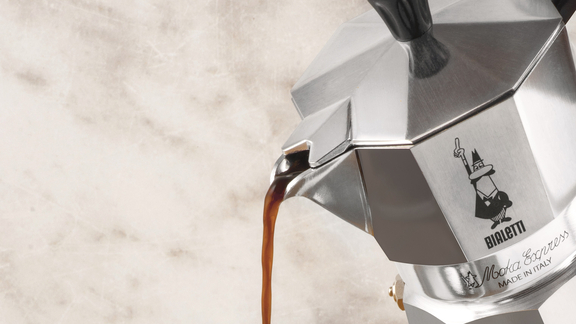

In launching his ‘Moka Express’ coffee maker in 1933, Alfonso Bialetti created a classic that has stood the test of time.
What makes someone a successful inventor? Without a doubt, the courage not to simply take the tried-and-tested way that things work for granted or regard them as optimal, but to radically challenge them. In the case of Willi Bruckbauer, founder of BORA, this resulted in the perfection of the idea of directly drawing cooking vapours downwards at the place they are created rather than allowing them to rise. Alfonso Bialetti, inventor of the ‘Moka Express’ pot, worked in the opposite direction from the perspective of physics.
At the time he completed his prototype for a new stove-top coffee maker in 1931, the only place you could drink espresso was in Italian coffee houses – made in huge espresso machines. These pressed hot water vapour down from above through a filled coffee strainer. According to reports, however, Alfonso Bialetti was fascinated by a device called a ‘Lisciveuse’: a kind of washing machine that the women of his home village in Piemont used to wash clothes. The system was simple: water was heated. When it boiled, it rose up through a pipe, was mixed with lye and poured over the laundry.
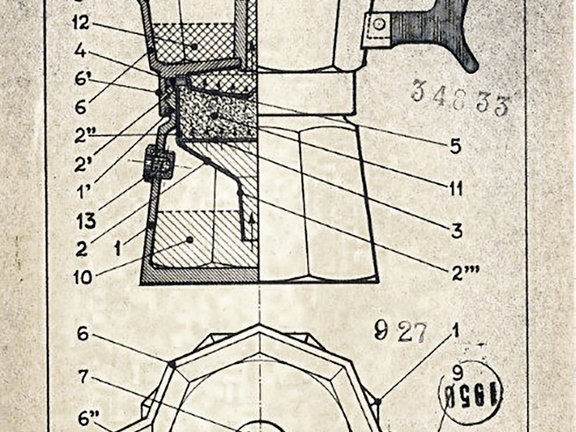
The inventor, who was born in the mountain village of Montebuglio in 1888, transferred this basic principle to his Bialetti coffee maker. Water heated on the cooker rises from an octagonal pot through a sieve with ground coffee and collects in the container screwed on top. The espresso pot is made from aluminium, which Alfonso Bialetti had learned to work during a stay in Paris. After all, a further prerequisite for inventive success is a precise knowledge of the workmanship methods and materials of the product world you want to work in.
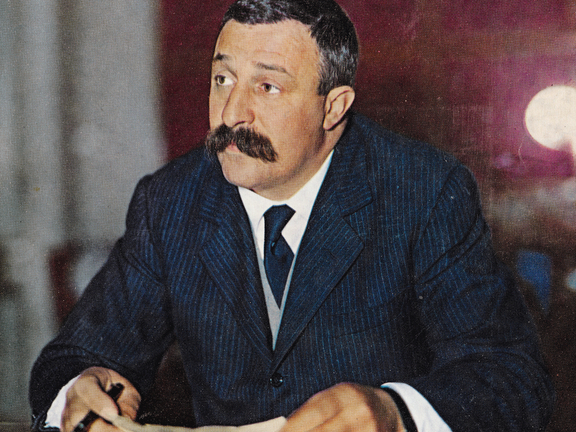
Parallels with Willi Bruckbauer can again be drawn in this regard: as a master joiner, he is extremely familiar with every last detail of the requirements regarding kitchen construction. With his ingenious pot, Alfonso Bialetti succeeded in both revolutionising and socialising espresso making – by enabling everyone to brew espresso on the stove at home with little effort and at low cost. Admittedly, you need 9 bars of pressure for a proper espresso, whereas Bialetti’s espresso pot only generates about 1.5 bars. He therefore baptised his result ‘moka’ and, accordingly, named his pot the ‘Bialetti Moka Express’.
In 1933, he started producing pots for sale in his small workshop in Crusinallo, just five kilometres from his birth village. At the time, Alfonso Bialetti had no idea that his purist and timeless model was to become a design icon.
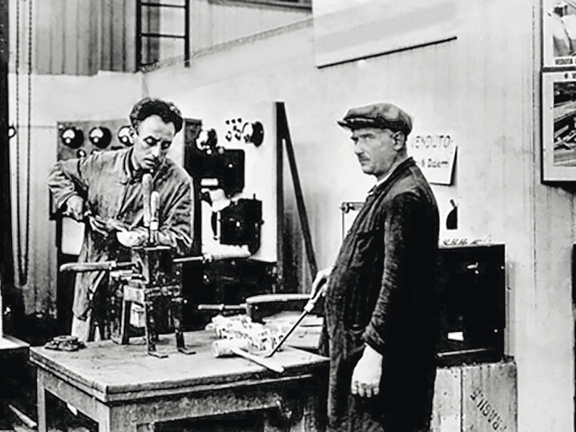
In fact, business was pretty slow. Between 1934 and 1939, he sold just 70,000 pots, mainly at weekly markets. The problem was that all inventions need good marketing. And Alfonso Bialetti was not a skilled salesman. It was therefore a stroke of good fortune that in 1945 his son Renato returned from Germany, where he had been a prisoner of war. He increased production to 1,000 pots per day and invested in advertising. Since 1953, every moka pot has featured the ‘L’omino coi baffi’, a small man with a moustache who deliberately resembles Renato Bialetti.
This created brand identity and a high degree of recognition. He also quickly started to use television adverts. The slogan ‘In casa un espresso come al bar’ (espresso at home, just like in a café) became an Italian saying. The economic boom that began in the mid-1950s also played its part in making the company an international success story.
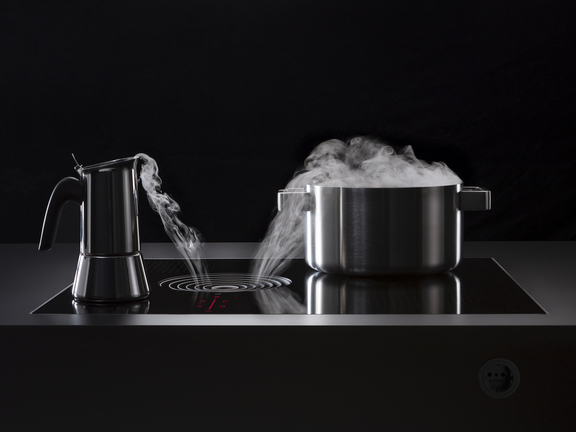
Today, over 90 percent of Italian households have at least one Bialetti Moka Express. Worldwide, the aluminium pot not only emanates the blissful aroma of coffee but also a sense of Italian lifestyle. Over the decades, the company has carefully expanded its product range, gradually adding various sizes and later coloured versions: red, black, lime green, light blue, yellow, fuchsia, gold – and yes, there is even a model in the colours of the Italian flag. Several new designs have been developed, such as the elegant ‘Venus’, the large format of which makes it suitable for induction stoves. The ‘Brikka’, which uses higher pressure to make particularly creamy coffee, has also gained a broad fan base.

Aside from a reduction in the number of outlet points for the coffee from the original four to two and the addition of a safety valve, the inner workings of the pots have remained unchanged over time. Even to this day, there is nothing about Alfonso Bialetti’s ingenious invention that can be improved from a technical perspective. The pots are still so robust and durable that they make life-long companions for their users. Accordingly, these can be very emotional about their personal Bialetti. They use this to make espressos on good and bad days, on joyful occasions and when in need of a pick-me-up. And while you wait the two to three minutes for the whistling in the pipe to announce the rising coffee, you have a little time to reflect on life. This is something else Alfonso Bialetti made possible with his invention.